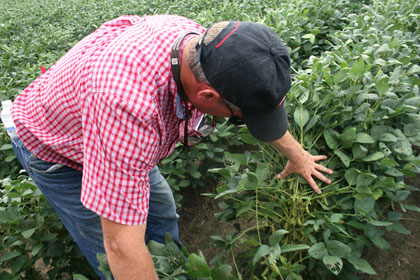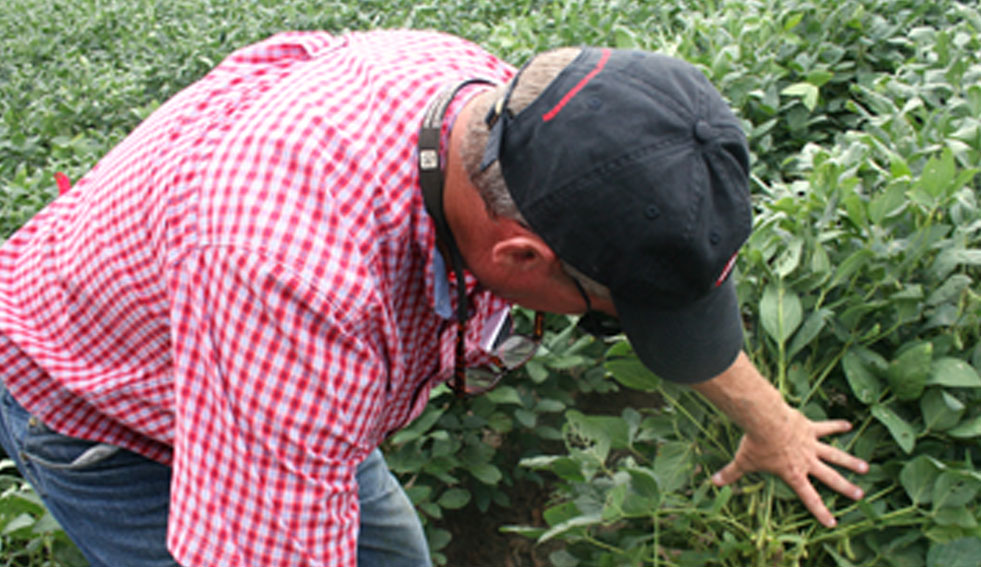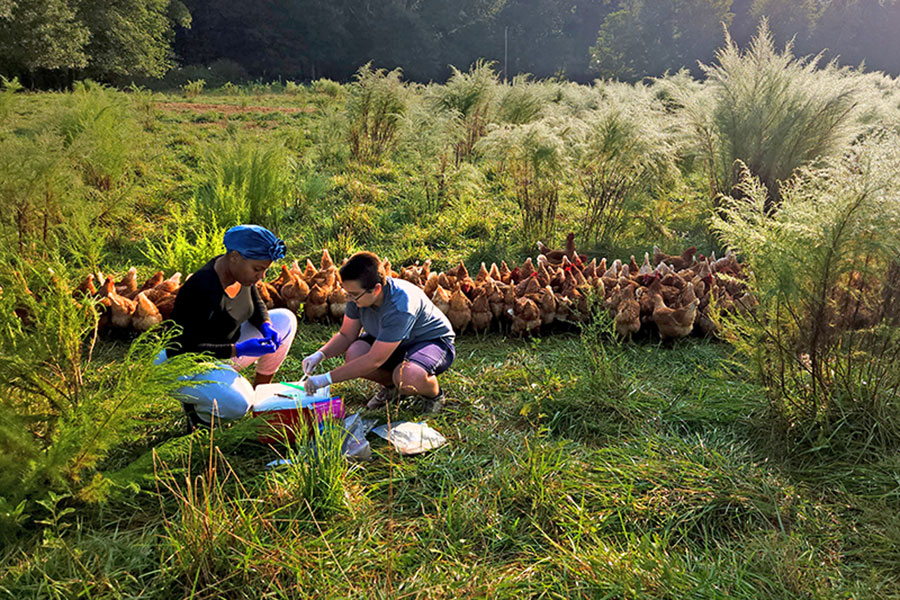Kudzu bugs may be native to Asia, but they’re a major problem in Georgia —particularly for soybean farmers.
On average, if left untreated, kudzu bug damage will result in a 20 percent yield loss for soybean farmers, with that figure reaching as high as 60 percent. Those are statistics University of Georgia entomologist Phillip Roberts wants soybean farmers to be mindful of.
“If you’re a soybean farmer in Georgia, you need to be aware of this pest,” said Roberts, a scientist with the UGA College of Agricultural and Environmental Sciences, Tifton Campus. “You need to be scouting for this pest.”
Roberts referred to the kudzu bug as an “economic pest” that requires management, such as scouting your soybean crop. When scouting soybeans, if the bug reaches a certain population or passes the economic threshold, action is required, usually in the form of an insecticide application.
“We believe we’ve developed a program where we can manage and minimize yield loss,” Roberts said. “We don’t eliminate yield loss. Our goal is to maximize profitability.”
Why are kudzu bugs so harmful to soybean plants? They possess a sucking mouth part that feeds on plant sap. The kudzu bug sucks on the main stem and the leaf, which weakens and stresses the plant.
Roberts discussed the collaborative research being conducted by UGA, Clemson and North Carolina State at the annual field day held at the Southeast Research and Education Center in Midville in August. The project, which is funded by the Georgia Soybean Commodity Commission and the United Soybean Board, is being studied at UGA farms in Midville, Tifton, Griffin and Athens. Researchers in Midville are looking at the economic threshold of kudzu bugs — or when the cost of kudzu bug damage starts to outweigh the cost of treating for the pests — and trying to determine the most appropriate time to treat for kudzu bugs based on the insects’ population density.
“The reason we’re working in Midville is you have a different environment here. The conditions are different, which allows us to make sure what we’re finding works in all these different environments,” Roberts said. “For example, in Midville for the last couple of years we’ve had extremely high numbers of kudzu bugs. That’s one of the reasons we’re working here. In 2013, we still have treatable infestations of kudzu bugs, but we (also) had real high populations in Griffin this year.
“It allows us to get data generated in that part of the state. It appears with the kudzu bug, what we’re learning, is that everything is pretty consistent in how it performs,” he said.
For more information about the kudzu bug, see the website developed by the University of Georgia Center for Invasive Species and Ecosystem Health at kudzubug.org.









